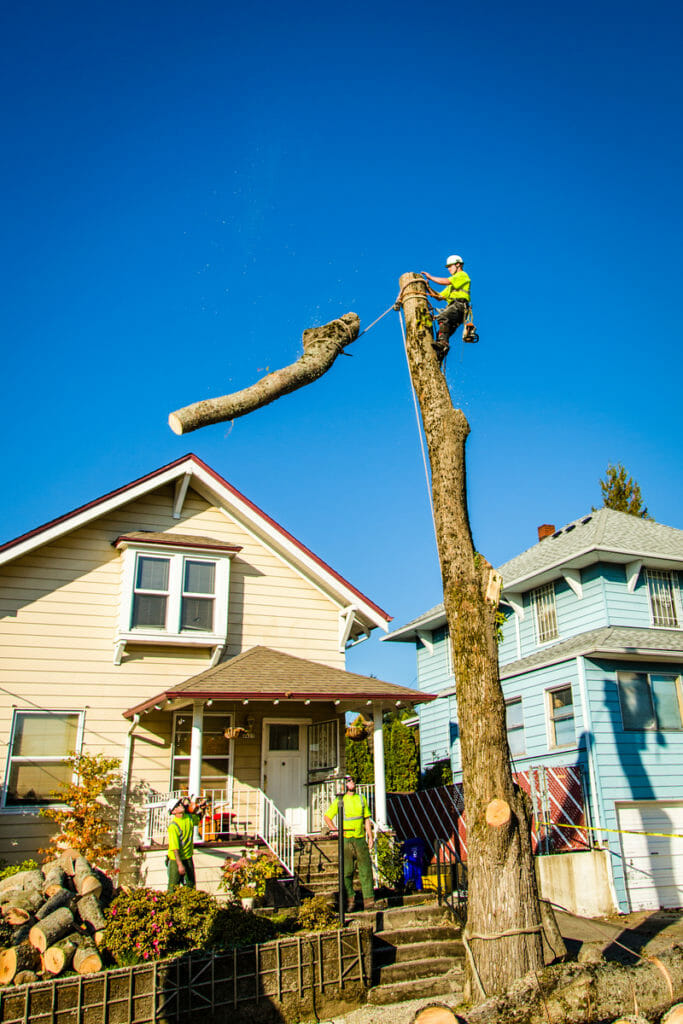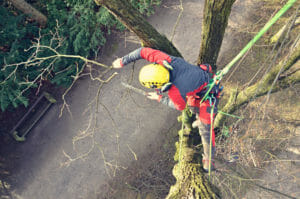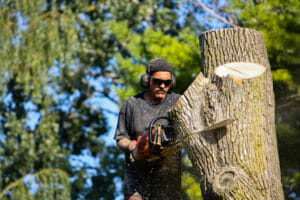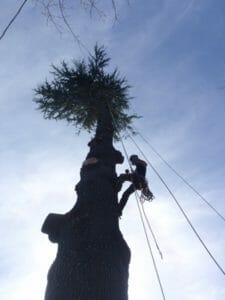 If you are trying to do some research to determine what it costs to get a tree removed in the Portland, Oregon area, you might find that the prices vary. There is not always a “one size fits all” price for these types of projects, because it depends on a variety of factors. We all would like a reliable formula or app for removing a tree, but unfortunately, that app doesn’t exist yet. Sometimes tree removal costs $50 and sometimes a single tree removal can cost $25K.
If you are trying to do some research to determine what it costs to get a tree removed in the Portland, Oregon area, you might find that the prices vary. There is not always a “one size fits all” price for these types of projects, because it depends on a variety of factors. We all would like a reliable formula or app for removing a tree, but unfortunately, that app doesn’t exist yet. Sometimes tree removal costs $50 and sometimes a single tree removal can cost $25K.
While there’s no definitive answer or formula to determine the average cost of tree removal, there are five main factors that go into determining the cost of tree removal. Prices will be mentioned below but remember that they are estimates and just an average cost to remove and not a price guarantee. Every tree is different and therefore every project will be different, whether it’s large tree removal, stump removal, or log splitting.
When researching prices for Portland tree removal, keep these factors in mind.
1. Size of the Tree
The size of the tree is the number one factor that can affect how much tree removal will cost. Both the height of the tree as well as the crown spread of the tree are factors that are considered by arborists.
Most people have difficulty getting the accurate height of their tree just by guessing. Luckily, there is an app for finding out how many feet tall your tree is and you can download it here. If you stick with guesstimates, a single story of a house is about 15 feet.
If your tree is larger than your house, it’s likely that removal of that tree has passed the $1,000 price range. If it towers over your whole neighborhood at over 100 feet, then you’ve probably passed $2,500 in removal costs.
Spread is a much harder thing to estimate, but for something like a large oak tree that spreads over three yards, it can be harder to remove, because of its large diameter and the many branches that make up the tree’s canopy. The average cost to remove a tree that has a three-yard spread is probably not going to be under the $2,500 mark.
2) How Many Obstacles Surround the Tree
 The more a tree overhangs your house, the more it costs to remove. If the roof of your home includes a skylight or is made up of cedar shingles, tree removal will cost more. If a tree is within 10 feet of your home, it will likely cost more than $2,000 to remove, because extra precautions need to be taken to ensure everything around your home is kept secure and safe.
The more a tree overhangs your house, the more it costs to remove. If the roof of your home includes a skylight or is made up of cedar shingles, tree removal will cost more. If a tree is within 10 feet of your home, it will likely cost more than $2,000 to remove, because extra precautions need to be taken to ensure everything around your home is kept secure and safe.
Additionally, if you have large items like RVs, hot tubs, or a playground sets in your yard, it is a good idea to move these things while your arborist is working to ensure no damage occurs from falling limbs or branches. Working around these things takes extra time and that translates to a higher than average cost to have the tree removed safely.
How close is your tree to existing communication or power lines, especially high voltage power lines? If the tree is close to these, it will cost affect the tree removal price. A tree that grows next to high voltage lines likely over $2,000.
3) Do you Have the Required Permits?
Portland’s trees are a vital and protected resource of the city, so it is important to check with the city government to find out what permits are required. Portland requires formal approval for removal of ‘street trees’ which grow in the public right-of-way, as well as on private property. Trees over a certain size or in a certain district may also require permitting.
Though it may seem thrifty to bypass this process, fines of $1,000 and greater will quickly void any savings. A consultant at Urban Forest Pro can help you navigate this permitting process to protect yourself. Once you have your questions answered and you have filled out the paperwork and have received a permit, you can start shopping around for estimates on tree removal.
4) How Easy is it to Access the Tree
 Is the tree easy to access with tree removal equipment? For example, a backyard tree costs more to remove than a front yard tree, simply because arborists will need to maneuver large equipment to and from the space.
Is the tree easy to access with tree removal equipment? For example, a backyard tree costs more to remove than a front yard tree, simply because arborists will need to maneuver large equipment to and from the space.
If it is difficult to gain easy entry your backyard space or the team must go through the garage, the cost of the tree removal can add to removal expenses. So, if you plan to remove a fence, consider doing that before you take the tree down, so you can save on tree removal expenses.
While it may seem obvious, a tree on a cliff costs more than a tree on flat ground. If the tree is located on a steep space or the terrain is rough and not easily accessible, your price estimate will likely be higher.
Another thing to note is that if the team of tree removal experts needs to obtain city parking permits to reserve parking on your street, there will be an additional cost added to your estimate. For example, if you live in the 97210-zip code, expect to pay $200 more just for parking.
Similarly, the closer your property is to Portland central, the easier we can reach you, so savings in fuel and time will be passed along to you. In suburban or isolated areas, flexible scheduling can help to avoid excessive costs. This could be done by arranging to have work performed at the same time as your neighbors.
5) What’s the Condition of the Tree?
 The condition of the tree will impact the price of its removal. If the tree is dead, rotten, diseased, severely cracked or in such bad shape that it cannot be easily cut down, it typically costs more. This is because the removal of sick or dead trees is more difficult than healthy ones.
The condition of the tree will impact the price of its removal. If the tree is dead, rotten, diseased, severely cracked or in such bad shape that it cannot be easily cut down, it typically costs more. This is because the removal of sick or dead trees is more difficult than healthy ones.
If your tree has fallen on your house due to decay, removal typically costs upwards of $5,000 because of the severity of the job. The silver lining for kind of this situation is that your homeowner’s insurance will usually cover this type of tree removal.
6) Expectations of Tree Removal Costs
Removing small trees or large trees requires assessing what repairs might need to be done in case something goes awry. For example, does your home have custom gutters or does your yard have an in-ground pool? The cost of potentially needing to repair these things goes into the cost of the removal.
Furthermore, we take into account the amount of clean up that needs to happen once the job is done. Removing trees can be a messy job and we want to leave your yard in the condition we found it. But, we will need to factor in time to clean up after our work, so you can continue to enjoy your exterior space with minimal disruption.
7) Time of Year
Spring is a beautiful time in the Pacific Northwest, and it is the time when trees show their true colors. As a result, the warmer months are the busiest time for tree service, and our scheduling backlog increases quickly. If a project does not require immediate attention due to a hazardous condition, you may arrange to schedule your appointment for tree or stump removal during the months of January, February or March at a potentially reduced cost. As a bonus, frozen ground and snow cover can help minimize the impact of tree removal on your lawn.
Tree Removal Portland, Oregon
If you are looking to hire a professional to find out the average cost to remove a tree or stump, keep in mind that each project is different. We understand that doing research on tree removal services can be a bit overwhelming, so it is okay to get several quotes to compare.
Urban Forest Professionals is happy to provide you a free estimate so you have an idea of what your project will encompass. Our arborists are experienced in the field and come licensed, bonded, and insured and we are glad to answer any questions you have regarding your specific project.
We serve the Portland Metro area as well as Vancouver, WA and its surrounding areas. Contact us today to find out more information about the tree removal process.
Check out our Angies List reviews.
Total Rating
5.0 out of 5 based on 427 reviews
This post first appeared on https://www.urbanforestprofessionals.com